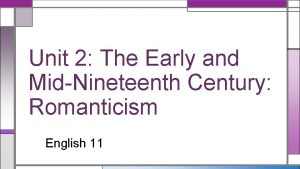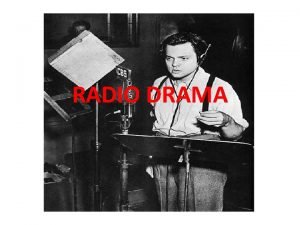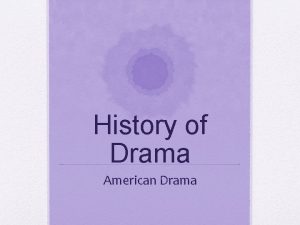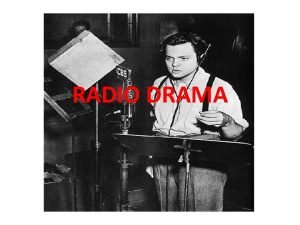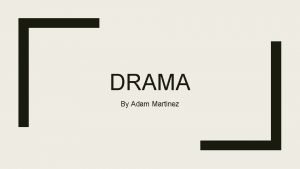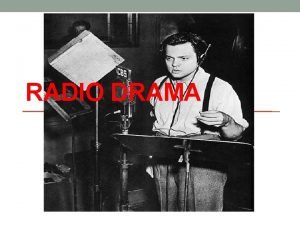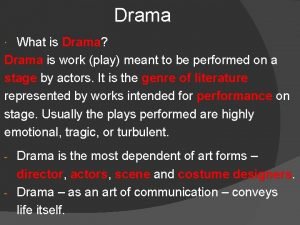NineteenthCentury Drama in the early 19 th century























- Slides: 23

Nineteenth-Century Drama in the early 19 th century

Beginnings • When the century began, drama was at its lowest ebb. • George III was that „old, mad, blind, despised and dying king”, that Shelley described, and his son became regent in 1812 before becoming George IV (1820 -1830). • He was liked no better than his father, and his brother, William IV (1830 -1837), antagonized the politicians. • It was quite a change when the young Victoria (1837 -1901) became popular. • She loved theatre and, by the end of her reign, „the new drama” had emerged.

Queen Victoria


Drama in the early 19 th century • For the first 15 years of the century, Britons were occupied with the Napoleonic War and with the heroic figures of Nelson and Wellington. • But the great urban centres had so grown that widespread poverty arose after the war; authorities severely repressed the workers. • It was only after the Reform Act of 1832 that prosperity increased and civil war was averted.

Theatrical conditions • The patent theatres both burned down and were rebuilt on a massive scale: • Drury Lane (1812) had a capacity of over 3200 while Covent Garden (1809) held slightly less. • Their huge size coarsened acting; performers had to indulge in rant (szavalás) and bombast (fellengzős) to be effective over large distances. • The large auditoriums also encouraged physical extravagance in plots and scenic effects; thus tastes coarsened, too.

Patent theatre • The patent theatres were theatres that were licensed to perform "spoken drama" after the English Restoration of Charles II in 1660. • Other theatres were prohibited from performing such "serious" drama, but were permitted to show comedy, pantomime or melodrama. • Drama was also interspersed with singing or dancing, to prevent the whole being too serious or dramatic.

• The Lyceum introduced gas lighting early in the century, followed by the patent theatres in 1817. • Gas lighting was flexible and easier to control: light could increase or fade quickly or slowly; various areas of the stage could be lit independently; and the soft radiance of gas created a fantasy world of compelling conviction. • Limelight was invented in 1825 and steadily came into general use. • Limelight gave an intense white light with a greenish hue. • Held by a technician high up in the gallery, its brilliant circle of light followed the leading performer around the stage.

• The limelight was unreliable and dangerous but was used for generations; only in the twentieth century was it slowly phased out as modern electric lanterns became more effective. • Traditions of great scene painting evolved: the Grieve family began its work at Covent Garden; and William Telbin worked at the Lyceum before moving to Covent Garden (1840).

• The increased size of London led to a greater audience. Smaller theatres sprang up. • There were amphitheatres in Whitechapel, Shoreditch, and elsewhere. • South of the Thames, the Royal Circus became the Surrey Theatre (1810), and the Coburg (1816) changed its name to the Royal Victoria in 1833. • In inner London, in addition to the patent houses, there were the Lyceum, The Olympic (1806), the Strand (1832), and the St. James’ (1835).

The Lyceum Theatre

Dramatic forms • The plays had to satisfy a new audience. • The expansion of London, and the increased capacity of the patent theatres, brought the working class into the playhouses. • They knew their power. • Theater riots became a kind of class war. • First, the middle class were driven from the pit to the boxes. • In 1809, Kemble tried to increase the price of admission to the pit, and riots closed Covent Garden for 67 nights.

Theatre Riots


• The forestage was reduced, which increased the numbers in the pit. • The performance, which satrted at 6: 00 p. m. (halfprice for those coming after 8: 00), consisted of at least three pieces: the main piece – usually sendwiched between two others, one of which was the afterpiece. • Thus the entire performance lasted for four or five hours or longer. • It was no wonder that tragedy and comedy degenerated into crude melodrama and farce. • Polite society did not return to theatres until Victoria had reigned for some years.

• The law said that only at Covent Garden and Drury Lane might characters in a play speak aloud to one another. • Thus mostly dumb shows were performed at the smaller theatres. • This let to utter simplicity (a black beard signified a villain) and magnification of action. • For variety there were singing, dancing, combats, pageantry, and magnificient scenery.

Dramatists • Most dramatist of this period were infected by that and can be quickly passed over. • Douglas William Jerrold (1803 -1857), who founded Punch (1841), established the pattern of the English nautical melodrama with Black Eyed Susan (1829). • John Sheridan Knowles (1788 -1862), an Irish cousin of Sheridan’s, combined classic themes, an Elizabethan manner, melodramatic situations, and the lower-middle-class taste of the audience.

Early Victorian Drama • The accession of Victoria in 1837 ushered in „the hungry forties”, a period of severe economic depression. • The novels of Charles Dickens, which brilliantly portray the domestic facts of misery and poverty, were all written between 1837 and 1870. • The poverty was worst in London. • The new railways had vastly increased its population, from 3/4 of a million in 1801 to two million in Victoria’s first years. • However, the railways stimulated employment.

• Prosperity began to return, so that in the 1850 s Britain became „the workshop of the world”. • The Great Exhibition of 1851 was an international trade advertisement on a grand scale. • Britain exported nearly three billion yards of cotton cloth each year, while her coal production was double that of Germany, France, and Belgium combined.

• Yet despite the expanding wealth, there were disturbing sings: these were the years of the Crimean War and the Indian Mutiny; moreover the poverty of the cities remained, even if it was not so obvious as in the 1840 s.

Theatrical Conditions • In 1837 theater belonged to the lower-middle and working classes. • By the late 1850 s, however, polite society was trickling back. • Theatre Act of 1834 destroyed the monopoly of the two patent theatres. • This Act merely recognized the growth of the minor houses earlier in the century; there was no immediate rush to build new theatres. • Yet, by 1851, there were 19 active playhouses in London.

• Haymarket removed both its proscenium doors and the forestage to fill the space with reserved stalls for wealthier patrons; steadily, other playhouses followed suit. • By 1850, the end of an act meant the dropping of a curtain which, for the next act, rose to reveal a new setting. • The audience now looked through the prosecnium arch, much like looking through a window onto events.

• The old patent houses turned to opera and spectacular events. • In 1853, Drury Lane even became a circus. • Acting was left mostly to the smaller theatres, where subtlety was needed. • The actor learned flexibility, he constantly changed roles. • Queen Victoria liked theatre. She even had companies perform at Windsor, so that, by 1842, Charles Kean began to supervise them. • This so impressed the middle class that they began to go back to the playhouses.
 The early and mid-nineteenth century romanticism
The early and mid-nineteenth century romanticism Unit 6 early 20th century ga
Unit 6 early 20th century ga Early cpr and early defibrillation can: *
Early cpr and early defibrillation can: * What is a dramatic character
What is a dramatic character Natak
Natak Drama berasal dari bahasa yunani yaitu dramoi yang artinya
Drama berasal dari bahasa yunani yaitu dramoi yang artinya What is a soap opera
What is a soap opera Eğitici drama ve yaratıcı drama arasındaki fark
Eğitici drama ve yaratıcı drama arasındaki fark Quá trình desamine hóa có thể tạo ra
Quá trình desamine hóa có thể tạo ra Cong thức tính động năng
Cong thức tính động năng Thiếu nhi thế giới liên hoan
Thiếu nhi thế giới liên hoan Khi nào hổ con có thể sống độc lập
Khi nào hổ con có thể sống độc lập điện thế nghỉ
điện thế nghỉ Nguyên nhân của sự mỏi cơ sinh 8
Nguyên nhân của sự mỏi cơ sinh 8 Bổ thể
Bổ thể độ dài liên kết
độ dài liên kết Môn thể thao bắt đầu bằng chữ đua
Môn thể thao bắt đầu bằng chữ đua So nguyen to
So nguyen to Phối cảnh
Phối cảnh Chúa yêu trần thế
Chúa yêu trần thế Một số thể thơ truyền thống
Một số thể thơ truyền thống Trời xanh đây là của chúng ta thể thơ
Trời xanh đây là của chúng ta thể thơ ưu thế lai là gì
ưu thế lai là gì Sơ đồ cơ thể người
Sơ đồ cơ thể người
